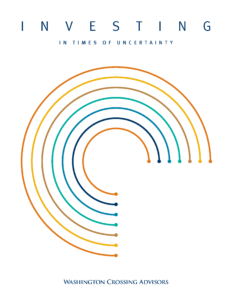Insight & Commentaries
Roughly 160 of the world’s nearly 200 countries are considered emerging markets (EM), and approximately 6 billion people, or 85% of the world’s population, live in emerging economies (map, below). Thus, there are plenty of reasons not to ignore emerging markets in a portfolio. But there are special considerations unique to emerging markets. These include currency movements, different political and legal systems, greater exposure to commodity prices in some cases, and periodic debt troubles. However, none of this is new, and many emerging markets are evolving from immature, rapid growth toward more mature, slower growth. Even though growth may be…
As we start the fourth quarter, the major U.S. stock market averages hover around a 0% return for the year. That unexciting performance masks extraordinary volatility — a 35% February-March decline and a 50% March-August bounce back. Other assets demonstrated similar volatility (graph, next page). Through September 30, Long-term U.S. Treasury bonds returned over 20%, and Bloomberg Barclays Aggregate U.S. Bond Index returned 6.5%. Short-term T-Bills returned about 0.7%, and gold is up 24%. Volatility again ruled the roost in 2020, and diversified portfolios generally did better than all stock portfolios. As we head into the final quarter of 2020,…
Imagine an investment strategy wherein you might seek out the most successful and valuable companies. We will refer to this as the “big five” portfolio. Further, imagine that this “big five” portfolio bought the five most valuable companies in the Standard & Poor’s 500 index at each year’s end starting in 2000. Imagine further that this process was repeated each year ever since. How might this strategy of buying big and valuable stocks have done? The strategy produced positive returns, but the journey would have been painful and frustrating (chart A, below). Investing in the “big five” at the start…
Even though stocks should rise over time, we think the pace of the market rally is set to slow because extraordinary government supports for the economy are set to fade, and valuations have run ahead of fundamentals. Changing Tack It is hard to bet against stocks for the long-term. Since the 1920s, stocks have produced a positive return every 20 years based on S&P 500 annual returns. Stocks tend to beat bonds and cash over time, supporting the idea that markets tend to reward risk. But this fact obscures the reality that stock investing also involves periodic drops. Not everyone…
Years ago, it was easy to make money. Those who were around during the 1970s may even remember earning near 20%. A three-month CD in December 1980 earned over 18%, according to data from the Federal Reserve. Such rates are near 0.18% today — far below the core inflation rate (+1.3% year-over-year). At that rate, a $100 investment would grow to only $101.80 over ten years. Evaporating Interest Rates And don’t think buying longer-term bonds is the answer, either. Ten-year U.S. Treasury bonds now yield 0.7% compared to over 3% just two years ago. A $100 investment in a zero-coupon…
Discusses outlook amid the current COVID-19 and zero-interest-rate environment. Kevin describes WCA’s rationale for emphasizing flexibility in portfolio companies. Quality, durability, and flexibility remain “watchwords” for investing as debt rises and the credit cycle ages. The interview starts at 27:41
After remaining unchanged for much of June, Municipals rallied in July, with yields falling to new record lows across most of the curve. Munis outperformed Treasuries and Corporates and the Muni to Treasury ratio, a common valuation metric that has been essentially meaningless since the market dislocation in March, has returned to more normal levels. Muni Mutual Fund inflows have continued for 11 consecutive weeks and cash from coupon and maturity payments led to strong demand, as we have expected. While rates are at historic lows, the curve remains steep, which offers an opportunity in the longer end of the…
We continue to see improvement in several indicators from a very weak second quarter. It is likely that, after a 30% annualized drop in GDP in Q2, Q3 could see a 25% annualized rebound. Progress is also seen in weekly data such as the Federal Reserve Bank of New York’s Weekly Economic Index (WEI). This index tracks ten daily and weekly indicators of real economic activity scaled to align with the four-quarter GDP growth rate (Chart A, below). The WEI spotlights consumer behavior, the labor market, and production weekly. As beauty is in the eye of the beholder, so too…
It is hard to conclude almost anything with certainty amid this pandemic. Are schools open? Or closed? Or half-open and half-closed? There seems to be less unanimity in Congress on policy issues. The size of continued supplemental unemployment benefits was at issue before this weekend’s executive order. Republicans favored a $200 additional benefit, and Democrats wanted $600. President Trump’s $400 figure falls neatly in the middle of the $200-$600 range, but questions over the order and funding for the order remain. The “muddled middle” will have to suffice for now, but, by comparison, today’s situation is far better than where…
The best-performing stocks since the beginning of the pandemic have had one thing in common — a high degree of financial flexibility. The worst-performing stocks were the least flexible. Before we start, it is important to define “flexibility.” For us, it has always meant low debt and high profitability. These characteristics tend to build buffers that help ensure survival during difficult times. Where to Find Flexibility Technology stocks, for example, have been a good place to find flexibility lately. The average technology company is very profitable, with very little debt. The sector’s return on assets (10.6%) is higher than any…



